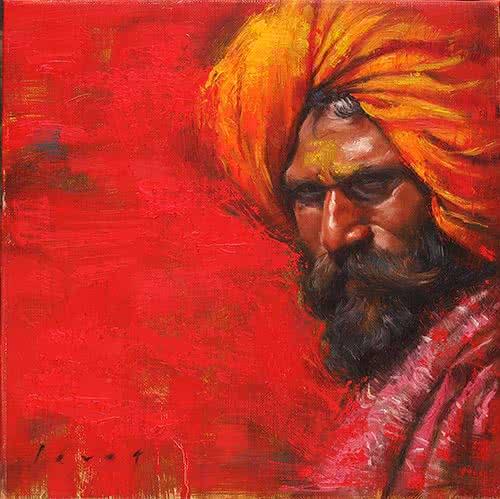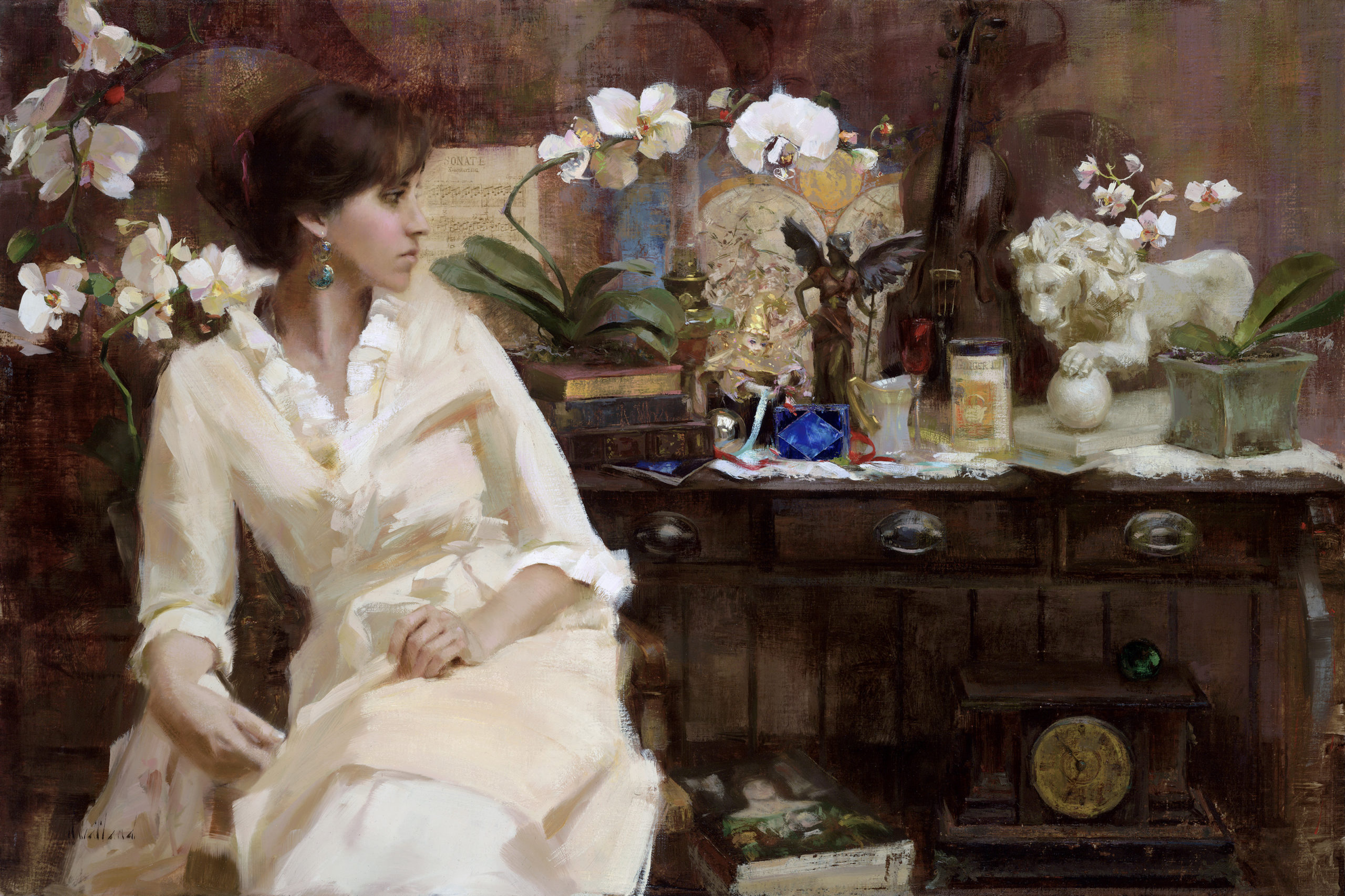Exploring Iconic Artists and Their Influences on Figurative Oil Painting
Exploring Iconic Artists and Their Influences on Figurative Oil Painting
Blog Article
The Evolution of Metaphorical Oil Paint: Comprehending Its Historical Significance and Modern Interpretations
The evolution of metaphorical oil painting acts as an engaging lens whereby to check out the interplay in between artistic expression and historical context. From the thorough naturalism of the Renaissance to the emotive power of the Baroque, each age has contributed layers of meaning and method to this ageless medium. Contemporary artists, attracting from this rich heritage, are now reinterpreting the human figure in ways that challenge standard narratives. As we discover these changes, one need to think about how the dialogue in between present and previous informs not just artistic technique however additionally social representations in an increasingly complicated globe.
Origins of Figurative Oil Painting
The origins of metaphorical oil painting can be traced back to the very early Renaissance in Europe, especially in the 15th century. The growth of oil paint allowed for better depth of color and detail, enhancing the realism and vibrancy of their work.

In this transformative era, numbers were often depicted within contextually abundant environments, showcasing not only their physical attributes yet likewise their mental states. Leaders such as Jan van Eyck and Titian utilized the medium's versatility, employing layering methods to attain luminosity and structure. This technology facilitated the portrayal of complex materials and the subtleties of complexion, contributing to the development of portraiture and narrative scenes.
Additionally, the Renaissance focus on humanism promoted an admiration for individuality, which subsequently influenced musicians to create even more relatable and vibrant numbers - figurative oil painting. Because of this, metaphorical oil paint arised as a powerful lorry for narration and emotional involvement, preparing for future imaginative motions and designs
Key Historic Movements
Significant historical activities have formed the evolution of figurative oil paint, each adding distinct philosophies and methods that increased the medium's opportunities. The Renaissance noted a critical minute, stressing realism and the human type, with musicians like Leonardo da Vinci and Michelangelo pressing the boundaries of anatomical precision and perspective. Following this, the Baroque age brought remarkable contrasts of light and darkness, exemplified by Caravaggio, who infused spiritual motifs with extreme emotionality.
The 19th century introduced Romanticism and Realism, where musicians such as Delacroix and Courbet challenged timeless suitables, concentrating on specific expression and day-to-day life. The advent of Impressionism further transformed the tool by stressing the effects of light and color, causing a separation from typical depiction.
In the very early 20th century, movements like Expressionism and Cubism redefined figurative painting with abstraction and the expedition of psychological deepness. Each of these activities not just mirrored the social adjustments of their times but also prepared for contemporary analyses. The interaction in between these historic activities has actually produced an abundant tapestry of designs and ideologies, affecting contemporary musicians in their quest of catching the human experience on canvas.
Methods and Materials Evolution

Throughout the Baroque duration, techniques such as chiaroscuro and sfumato arised, enhancing the psychological resonance of figurative make-ups. Artists started to try out glazes and impasto, manipulating structure and luminance. By the 19th century, innovations like using pre-mixed paints in tubes changed ease of access, enabling musicians to paint en plein his explanation air and catch the short lived effects of light.
The 20th century witnessed the intro of artificial pigments and mediums, which broadened the scheme and altered the consistency of oil paints. Additionally, the expedition of new application techniques, such as combination blades and brushes of differing tightness, more varied artistic expression. Jointly, these developments show the advancing relationship between materials, methods, and the creative vision intrinsic in figurative oil painting.

Contemporary Interpretations
Contemporary analyses of metaphorical oil painting show a dynamic dialogue between practice and innovation, where musicians test developed norms and discover varied styles. This development materializes in various ways, as modern musicians blend classical techniques with modern-day ideas, commonly attending to social, political, and personal narratives.
Numerous practitioners attract motivation from historical jobs, yet they instill their pieces with contemporary viewpoints, using the human form as straight from the source a lorry for discourse on identity, sex, and culture. Artists increasingly trying out abstraction, distortion, and combined media, which allows for a more comprehensive analysis of the figure and its context.
In addition, the use of vivid shade palettes and unconventional make-ups commonly serves to interfere with conventional watching experiences, provoking critical interaction from audiences. This shift in emphasis extends past aesthetic appeals; it reflects an expanding understanding of the intricacies of human experience in an interconnected world.
As metaphorical oil painting continues to advance, it remains an essential medium for checking out the subtleties of contemporary life, symbolizing both a regard for heritage and a commitment to dynamic thought. The result is an abundant tapestry of expression that resonates with the complexities of the contemporary human problem.
Effect On Modern Art
The influence of metaphorical oil paint on modern art is profound, as it has continuously motivated a myriad of imaginative motions and practices throughout the 20th and 21st centuries. From Expressionism to Surrealism and beyond, the exploration of the human figure has stayed a main motif, permitting musicians to share complex feelings and narratives. This emphasis on figurative depiction has caused a re-examination of conventional strategies, causing cutting-edge methods that blend realism with abstraction.
Additionally, contemporary artists have actually welcomed figurative oil paint as a method to deal with social and political concerns, using the tool to test assumptions of society, sex, and identity. The revival of interest in metaphorical operate in current years reflects a longing for link in a significantly electronic world, where human experience and feeling are paramount.
Additionally, the discussion between figurative oil paint and contemporary art appears in the works of musicians such as Kehinde Wiley and Jenny Saville, who make use of historic references while instilling their pieces with contemporary importance. Eventually, figurative oil paint remains to form and redefine contemporary artistic expression, emphasizing its enduring value in the art globe.
Conclusion
The evolution of metaphorical oil paint emphasizes its historical relevance and flexibility across various creative activities. Eventually, click this site metaphorical oil painting remains a crucial tool for discovering the human experience, resonating profoundly in today's digital landscape.
The development of metaphorical oil paint offers as a compelling lens through which to analyze the interplay in between imaginative expression and historic context.Substantial historic movements have shaped the evolution of figurative oil painting, each contributing distinct approaches and methods that broadened the tool's opportunities.As historic motions formed the trajectory of metaphorical oil paint, the products and methods utilized by artists have also gone through significant changes. figurative oil painting.The impact of metaphorical oil painting on modern art is profound, as it has actually consistently inspired a myriad of creative motions and techniques throughout the 20th and 21st centuries.The evolution of figurative oil paint emphasizes its historic importance and adaptability across numerous imaginative motions
Report this page